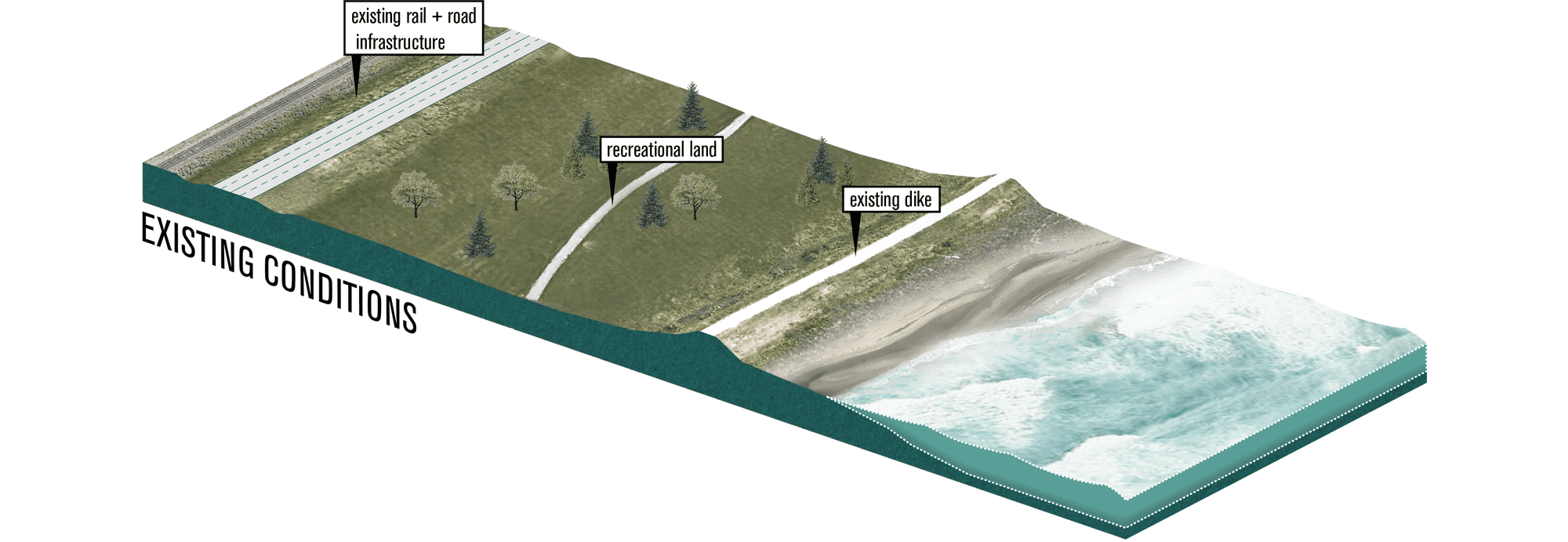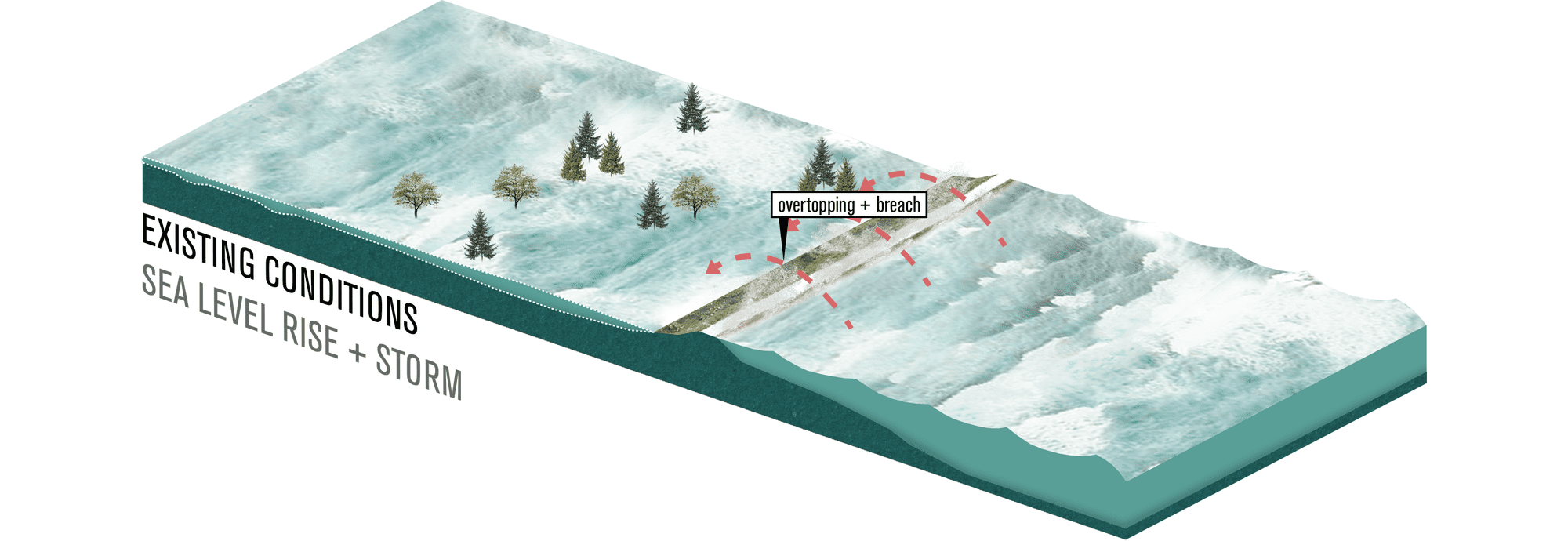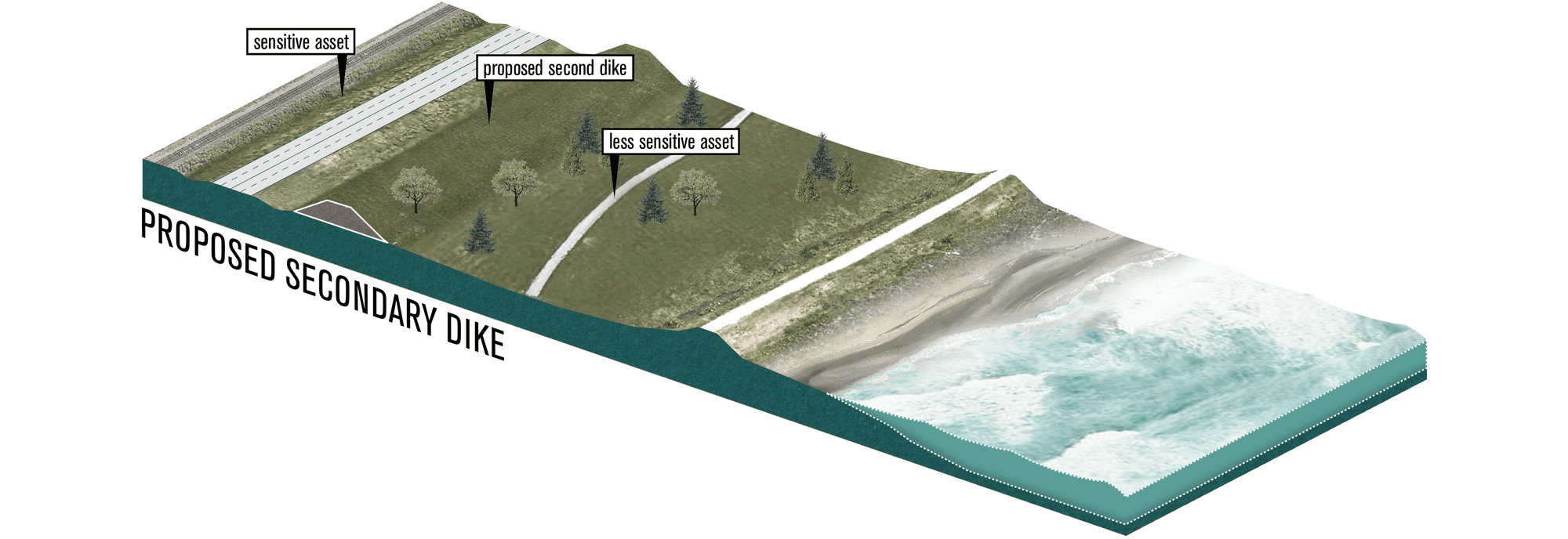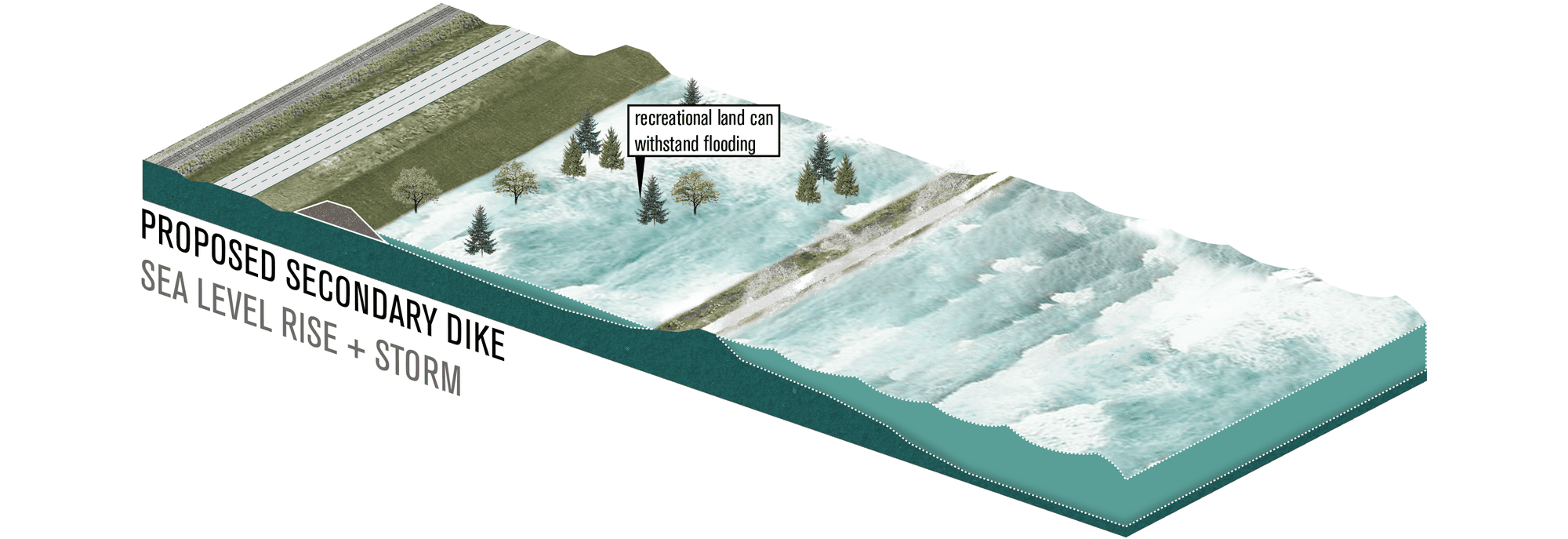Adaptation Strategy: Secondary Dikes
Secondary dikes work in conjunction with primary dikes to reduce the impact of a flood if the primary dike is breached.1 Several secondary dikes designs may be similar to that of a primary dike but on a smaller scale. For example, in the city of Winnipeg, and secondary dike is simply defined as (any permanent dyke or other flood control work within the City of Winnipeg which has been, or is, constructed between a primary dyke and the channel). Hence, secondary dikes are classified based on their position and the role they play in flood mitigation. In the Netherlands, secondary dikes were historically known as ‘sleeper dikes’: a backup dike which is located between the main dike and the land.2 Today, secondary dikes are still a viable adaptation strategy and are usually placed behind the main dike to protect high-value residential land in the case of a breach. In between the main dike and secondary dike are the least sensitive assets such as parks and open spaces that can withstand flooding.
How it works
Types of secondary dikes
- A berm is a ridge that is constructed from compacted soil. The dike could be made from composted material, gravel, crushed rock, sandbags, gravel bag barriers, or straw bales
- A temporary dike is designed to intercept and prevent runoff from entering a disturbed area It diverts or directs the water to a controlled or stabilized drainage outlet. 7
Benefits
- Serves to intercept flood runoff and sediment from exposed disturbed areas, such as a newly-constructed road or slope, and filter sediment.
- Redirects the flood water to a slope drain, sediment basin, or other specified location.
- Intercepts runoff from undisturbed upland areas, and redirects runoff to a sediment basin or specified location. 7
- Limits flooding to areas that are less developed which helps to protect more developed areas.
Challenges
- Must be designed and constructed to mitigate erosion caused by water diversion and concentrated runoff flow.
- For construction, topographical features such as space, degree of slope, and access can be limiting or prohibitive factors 7
Example projects
Terra Nova Secondary Dike
Richmond BC, Canada
As part of the Richmond Dike Master Plan, the City of Richmond British Columbia is considering an alternative dike alignment in the Terra Nova area. As an alternative, the Dike Master Plan identifies the alignment to be set inland as part of a secondary dike. The dike is intended to protect sensitive assets such as private homes and heritage sites while less sensitive assets such as parks, trails, and open spaces can be flooded, in the case of a breach.6
Hondsbossche Zeewering Sleeper Dike
Holland, The Netherlands
In 1526, a secondary dike was constructed behind the Hondsbossche Zeewering Dike because of concerns related to the weakness of the sea wall.3 In 1570, the main dike was breached, and the secondary dike prevented North Holland from being flooded. Secondary dikes or sleeper dikes were commonly used all over the Netherlands as part of the Delta Plan (Dutch dike system).4 However, most of these dikes no longer have a function in flood protection after the improvement of the Delta Plan but remain protected today for their cultural and historical value.5
Citations
-
1.
↑
The Arlington Group Planning Architecture Inc., et al. Sea Level Rise Adaptation Primer. pp. 106. https://www2.gov.bc.ca/assets/gov/environment/climate-change/adaptation/resources/slr-primer.pdf
-
2.
↑
“Sleeper Dike.” Wikipedia, Wikimedia Foundation, 20 June 2019, https://en.wikipedia.org/wiki/Sleeper_dike.
-
3.
↑
“Dutch Dikes.” Dike Map of the Netherlands, http://dutchdikes.net/map/.
-
4.
↑
Ibid.
-
5.
↑
“Sleeper Dike.” Wikipedia, Wikimedia Foundation, 20 June 2019, https://en.wikipedia.org/wiki/Sleeper_dike.
-
6.
↑
City of Richmond Dike Master Plan. 6 Dec. 2016, https://www.richmond.ca/__shared/assets/_3_DikeMasterPlan_Phase246195.pdf.
-
7.
↑
Anonymous (nd). Best Management Practices Manual. Chapter 2 Temporary Sediment Control Management. DIKES AND BERMS.
-
i1.
↑
A Typical Sleeper Dike near the Hondsbossche Zeewering. https://upload.wikimedia.org/wikipedia/commons/3/3b/SlaperdijkHondsbossche.jpg.



